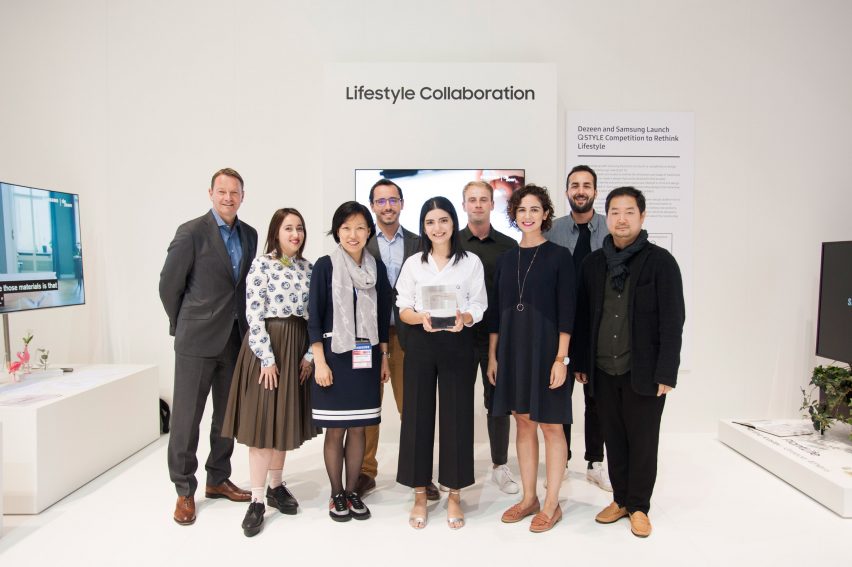Scandinavian-inspired TV stand design wins Dezeen and Samsung's competition
Dezeen promotion: Turkish designer Fulden Dehneli has been named the winner of Dezeen and Samsung's QLED TV stand design competition, with her idea for a stand that doubles as an adaptable piece of furniture.
Dehneli's RøR design beat projects by four other finalists – including one that placed the television in the middle of a plant pot and a sculptural piece made with tinted glass.
The competition asked entrants to rethink traditional television stands with a design for Samsung's QLED TV, considering the device as not just a technology item but a lifestyle product. They were in the running for a prize pot of €30,000 (approximately £28,000).
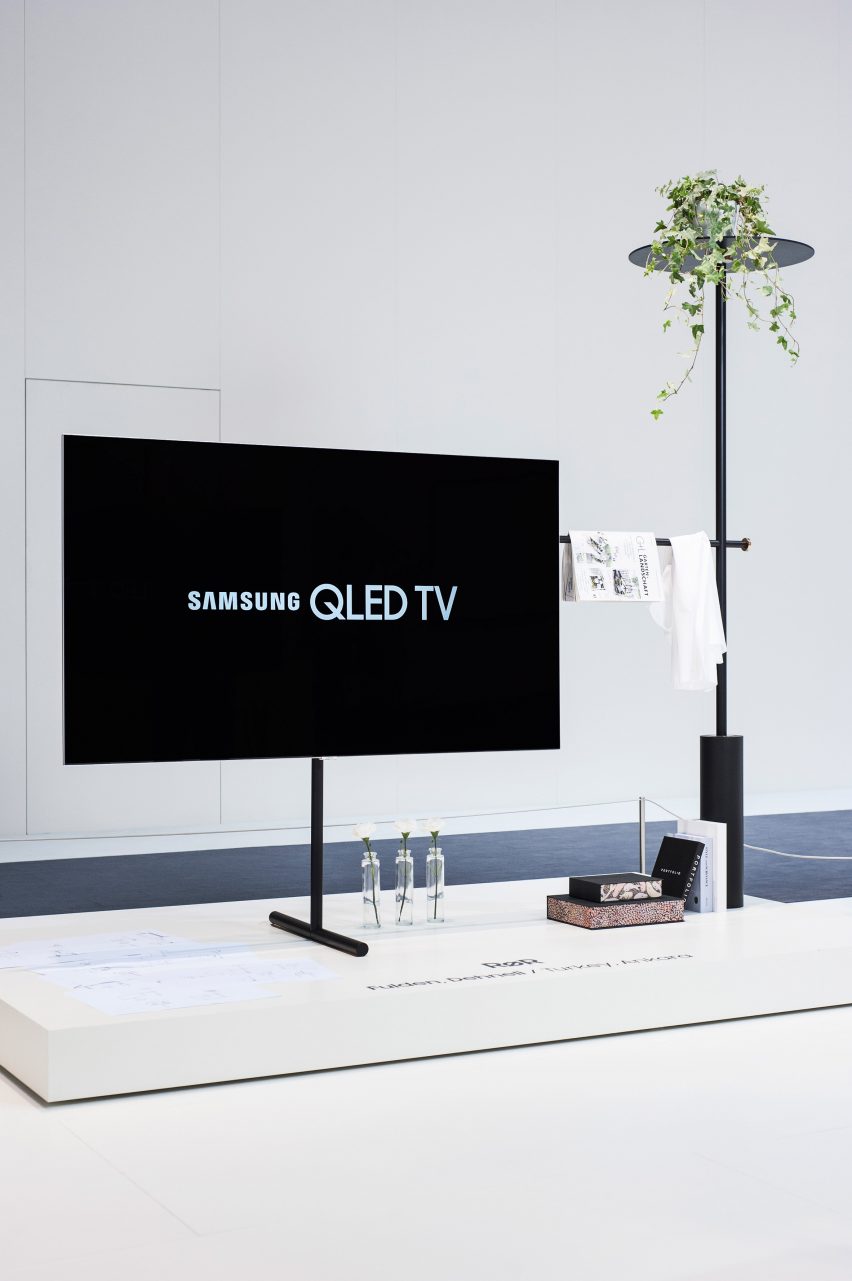
Dehneli was named the winner following a live judging that saw all five of the finalists present their designs in front of a jury at consumer electronics fair IFA in Berlin. Mock-ups were also made of the finalists' concepts, and displayed within Samsung's booth at the fair.
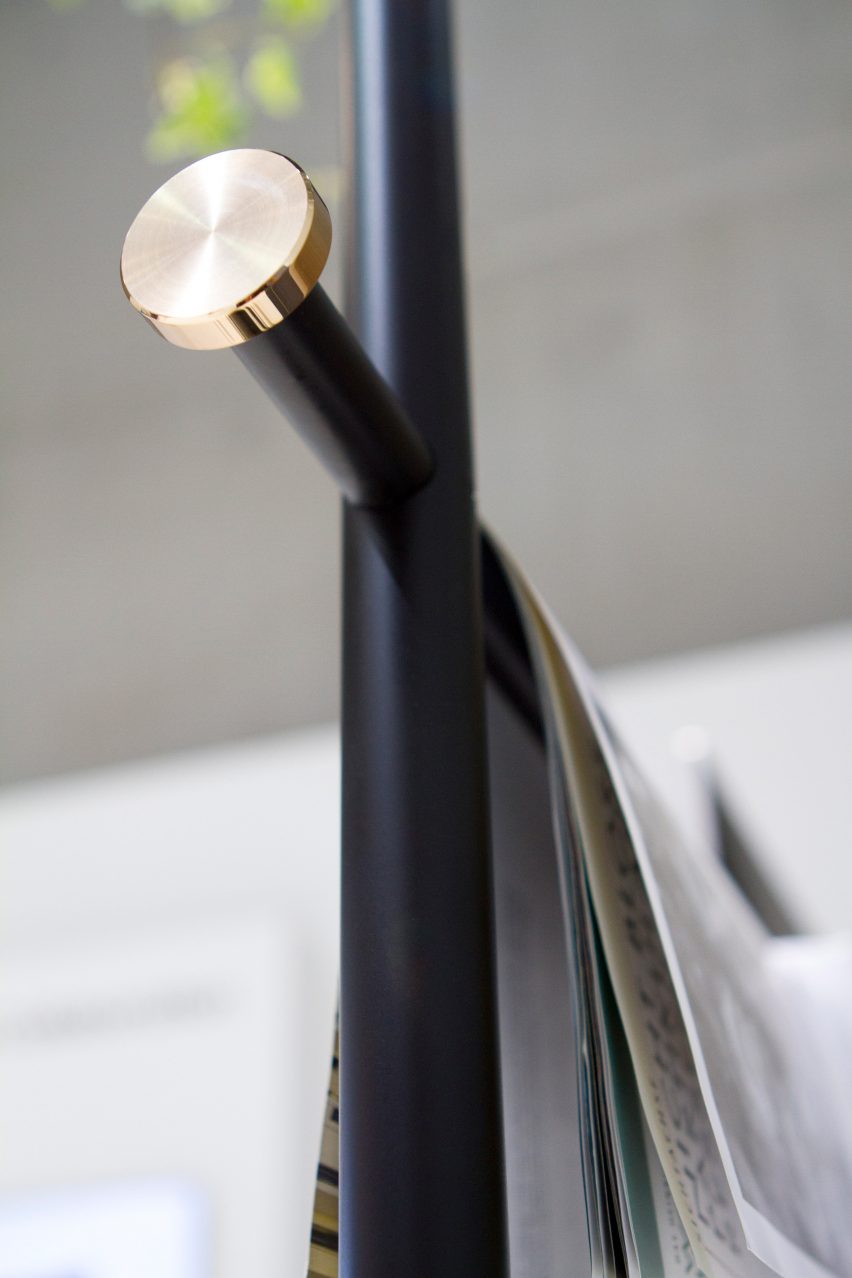
The judges chose RøR on the basis of its strong and original concept, which went well beyond conventional product design to explore new ways technology could be combined with consumers' lifestyles.
Dehneli created the stand as a means to "humanise" technology and make people engage with their TV when they are not necessarily watching it.
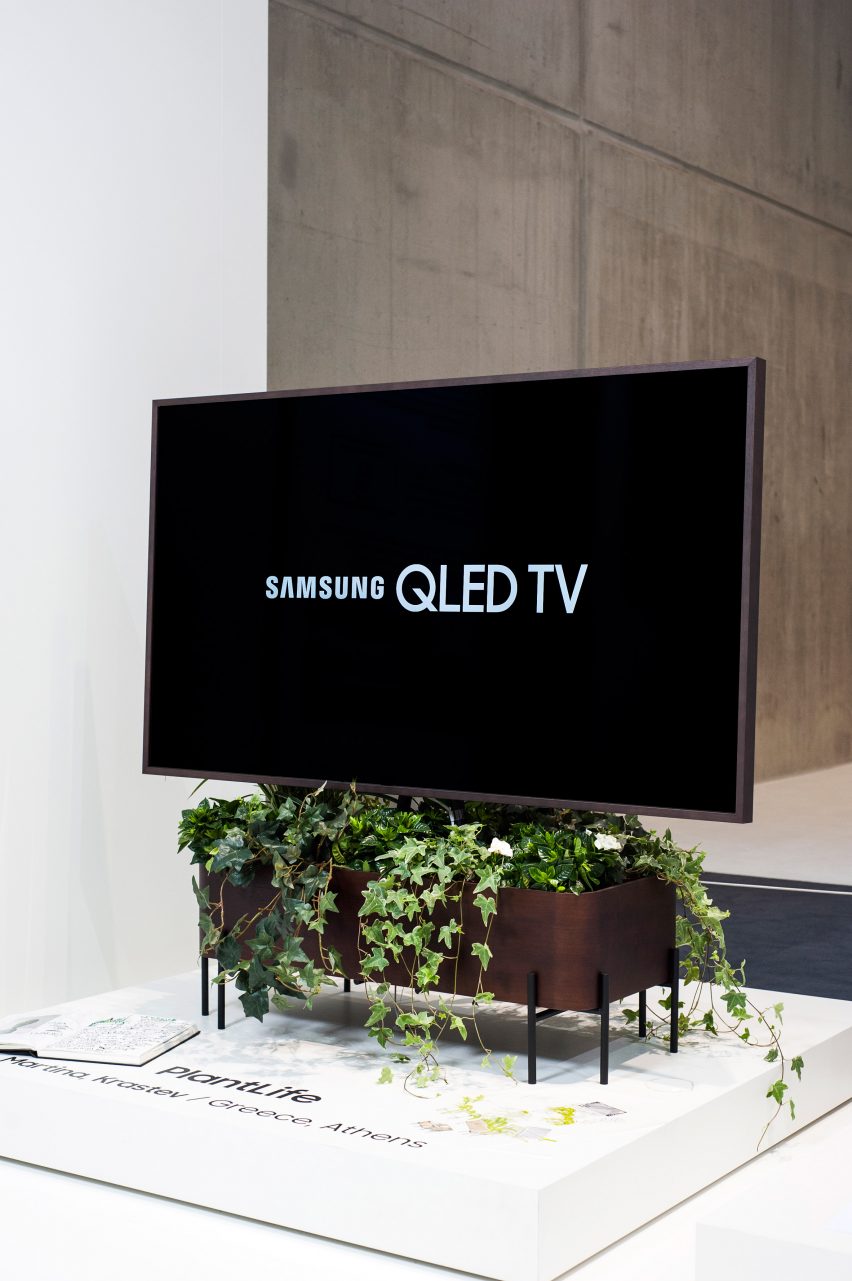
The Scandinavian-inspired design is made from powder-coated metal tubes, which form a frame that can be used to hang things from – like clothes, speakers or pictures. It also incorporates a circular shelf for displaying objects.

"Felden presented a design that was truly innovative," said the jury. "There is nothing like it currently on the market, but given current trends in interiors and lifestyle, she makes a solid case that there should be."
"Rather than being a finished, fixed design, this is a strong concept with the scope to be developed in different ways and still be recognisable as quintessentially RøR."
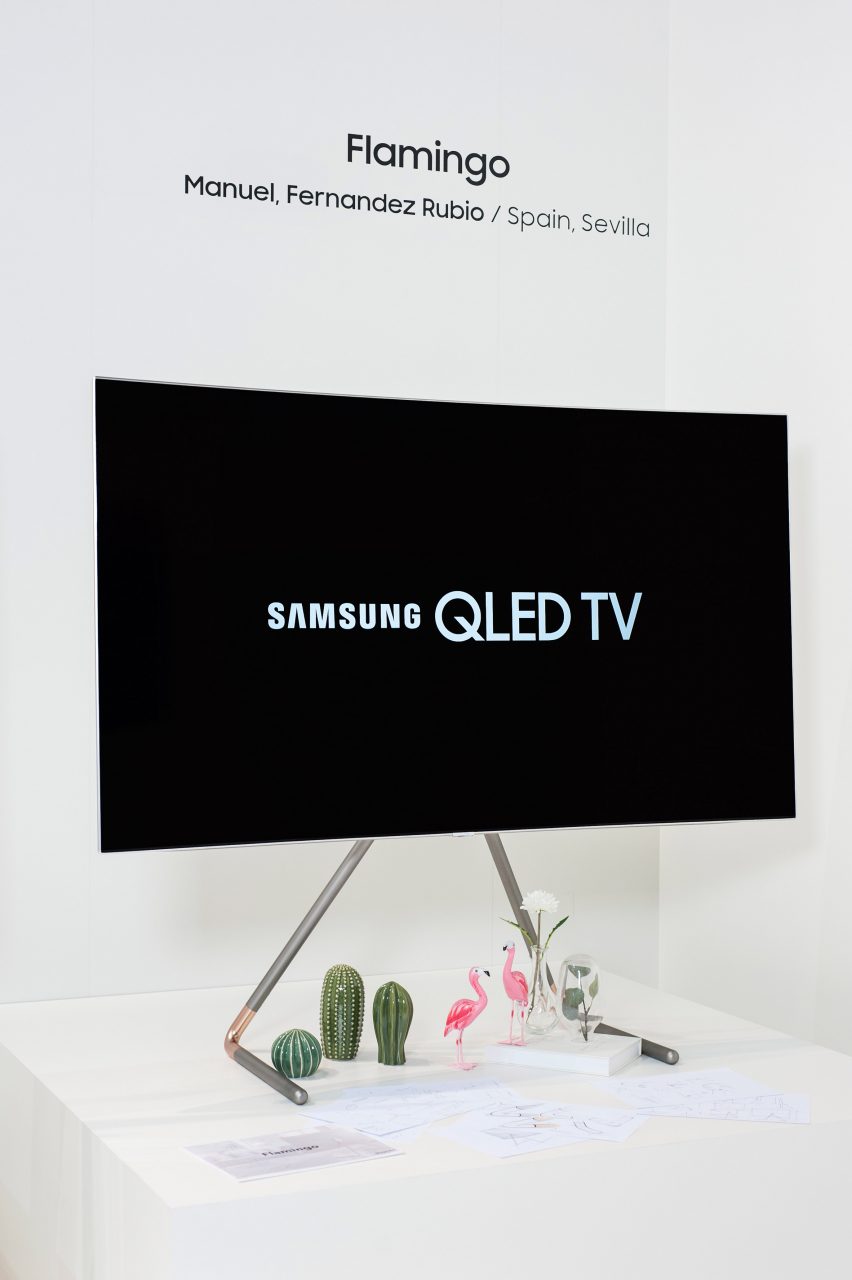
The judges also praised RøR for its practicality of shipping and assembly, and its flexibility to work with different environments and television sizes.
Dehneli suggests that users can change the way they present their stand at home at different times in their lives, or to suit different rooms. She also sees it working in a B2B environment, such as retail, where it can be used to display goods.
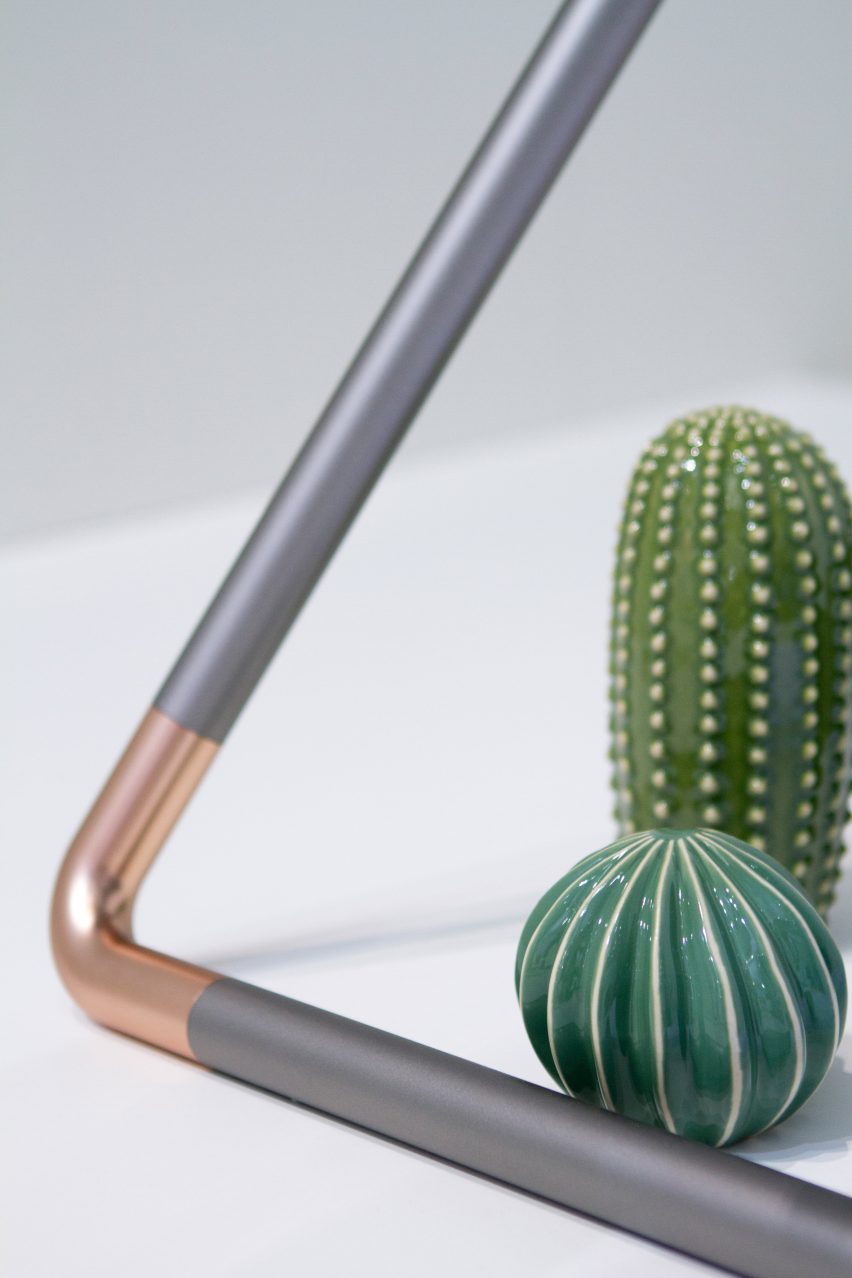
She sees opportunities for Samsung to release accessories and material upgrades, for example, a marble or concrete shelf.
The base retail price for RøR is estimated at €200 to €300 (£184 to £276).
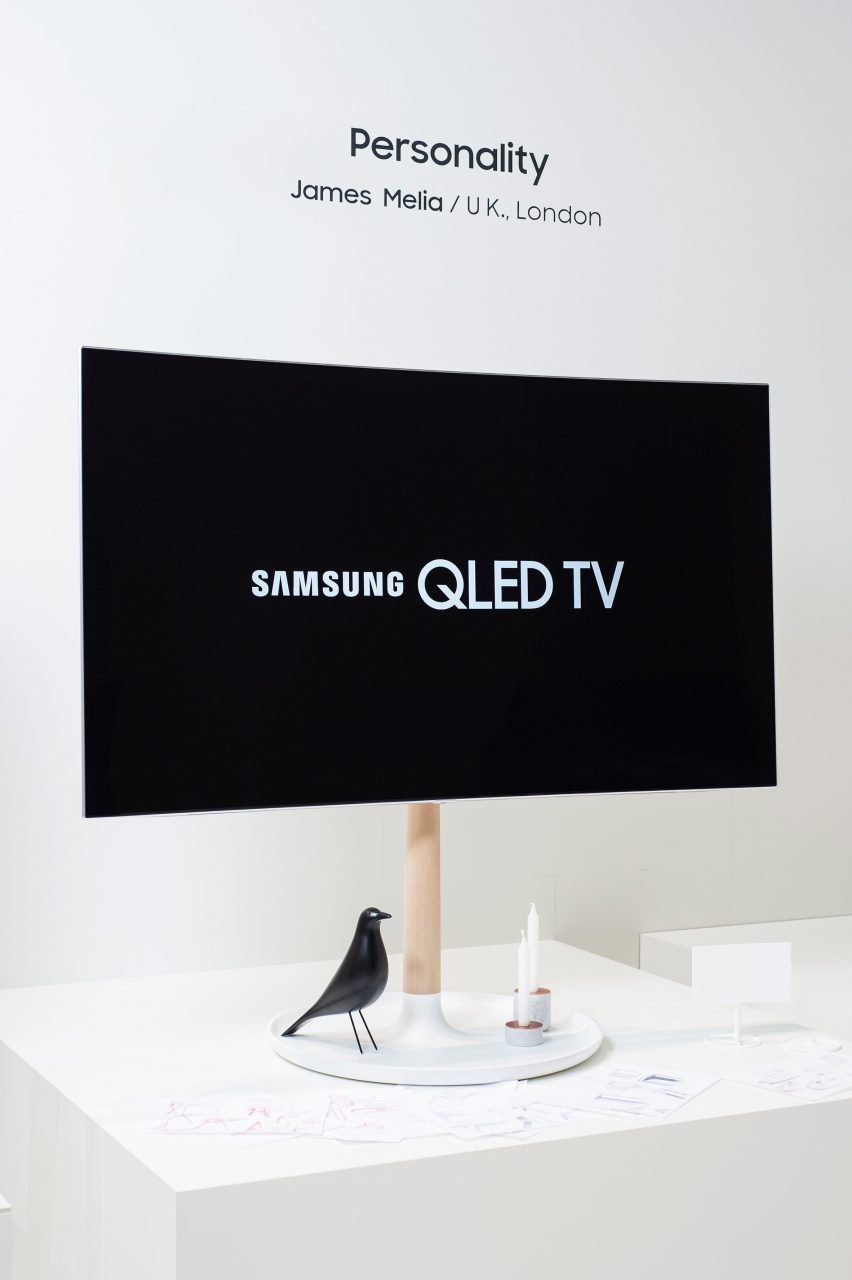
RøR was chosen as the winner by a panel made up of Yun Je Kang, head of the TV design team for Samsung Visual Display Business; David Lowes, senior vice-president and European chief marketing officer for Samsung; Sung Hee Han, head of marketing for Samsung Electronics Visual Displays Korea; and Rima Sabina Aouf, deputy editor of Dezeen.
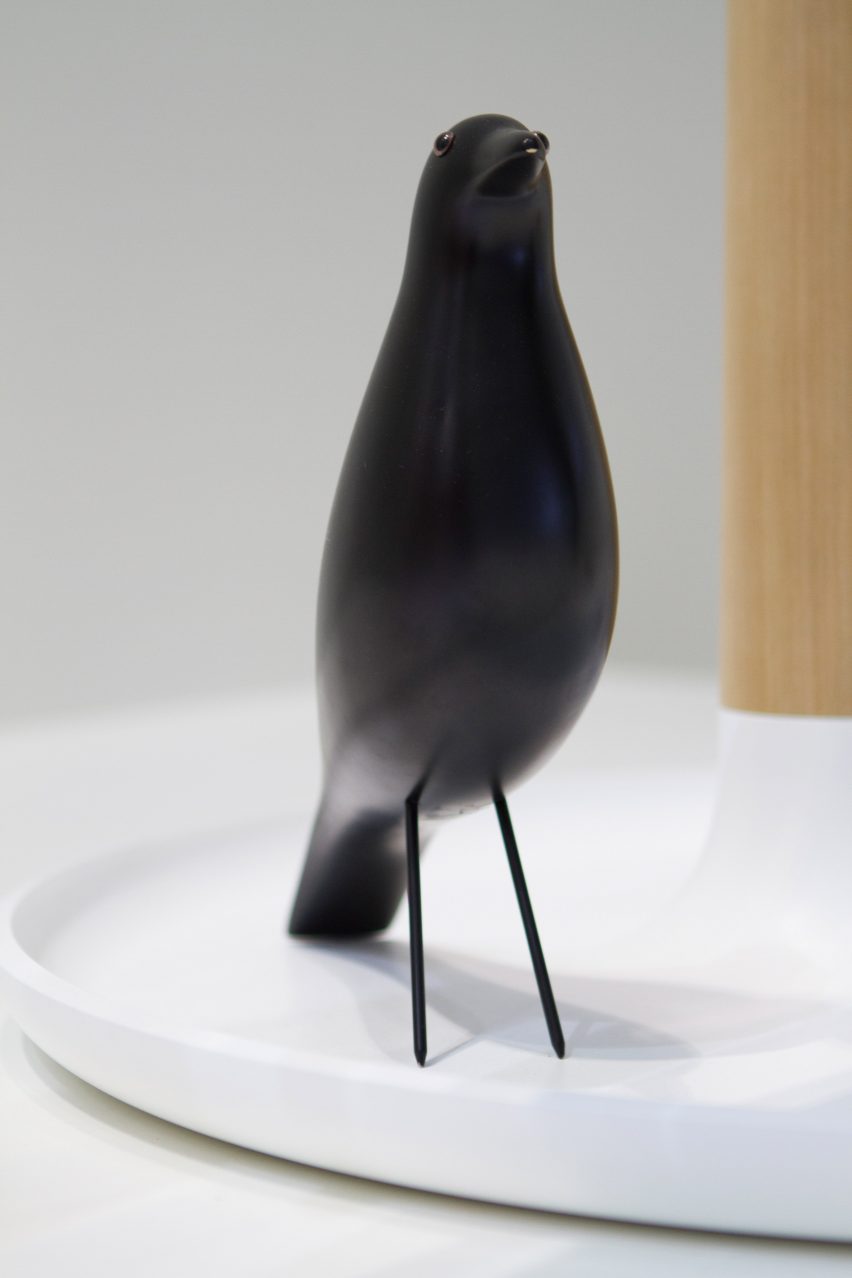
The four runners up in the competition included Greek designer Martina Krastev with her stand, PlantLife. Constructed from handwoven rattan, the stand doubled as a plant holder and was designed for a "new tribe of plant lovers" who live in city apartments.
Manuel Fernandez Rubio from Seville, Spain was also a runner-up with his Flamingo design – a minimal stand with thin, bird-like legs. Made of two complementary, customisable materials, it was designed to be easily height adjustable so it could adapt when consumers moved home or changed their furnishings.
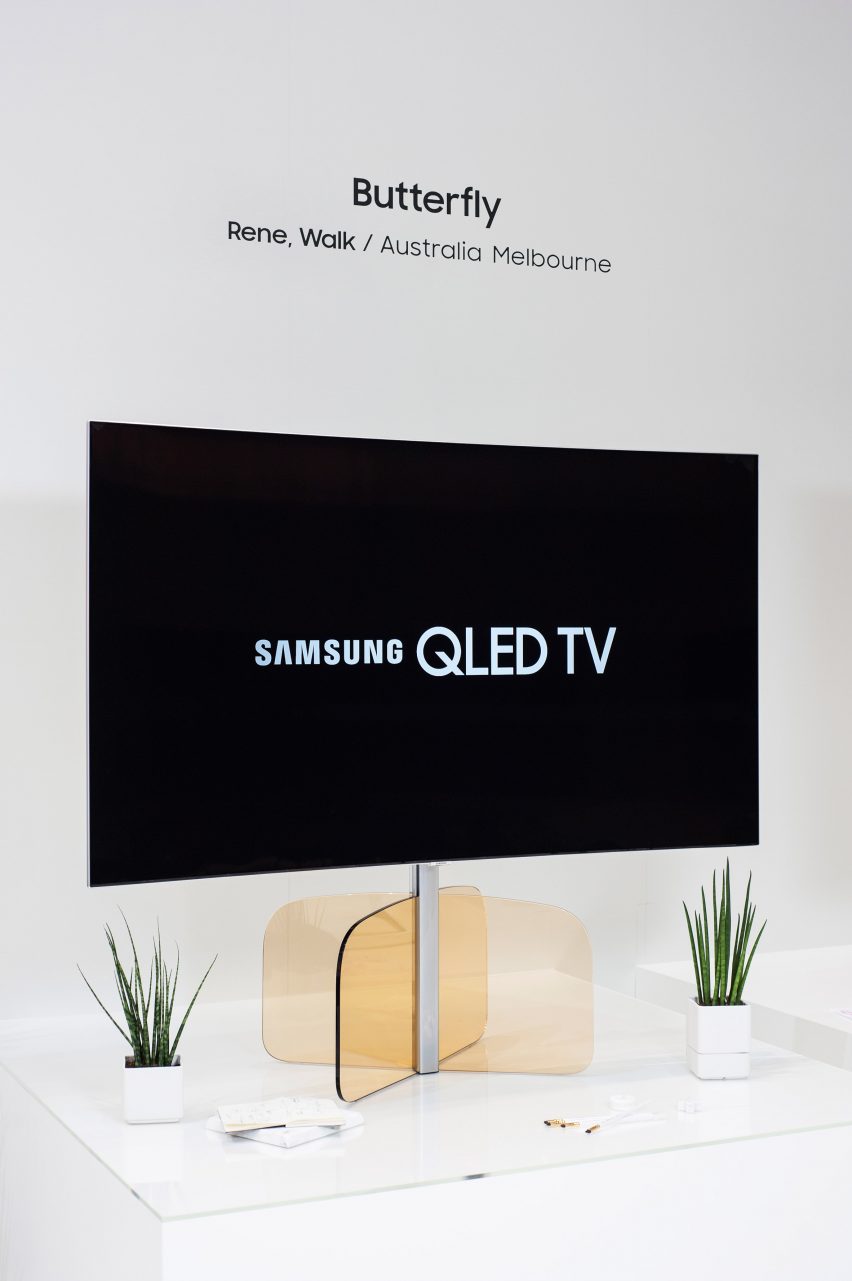
Another runner-up design was Personality by London studio Blond – a concept that centred on customisation. Its three parts could be mix and matched by customers using an online tool, with options to include a speaker leg or a tray base to display and store items.
The remaining runner-up was Rene Walk from Melbourne, Australia, who created a tinted-glass design he pitched at the luxury market. While it shipped flat-pack, once assembled the stand was a sculptural, statement piece that cast overlapping coloured shadows.
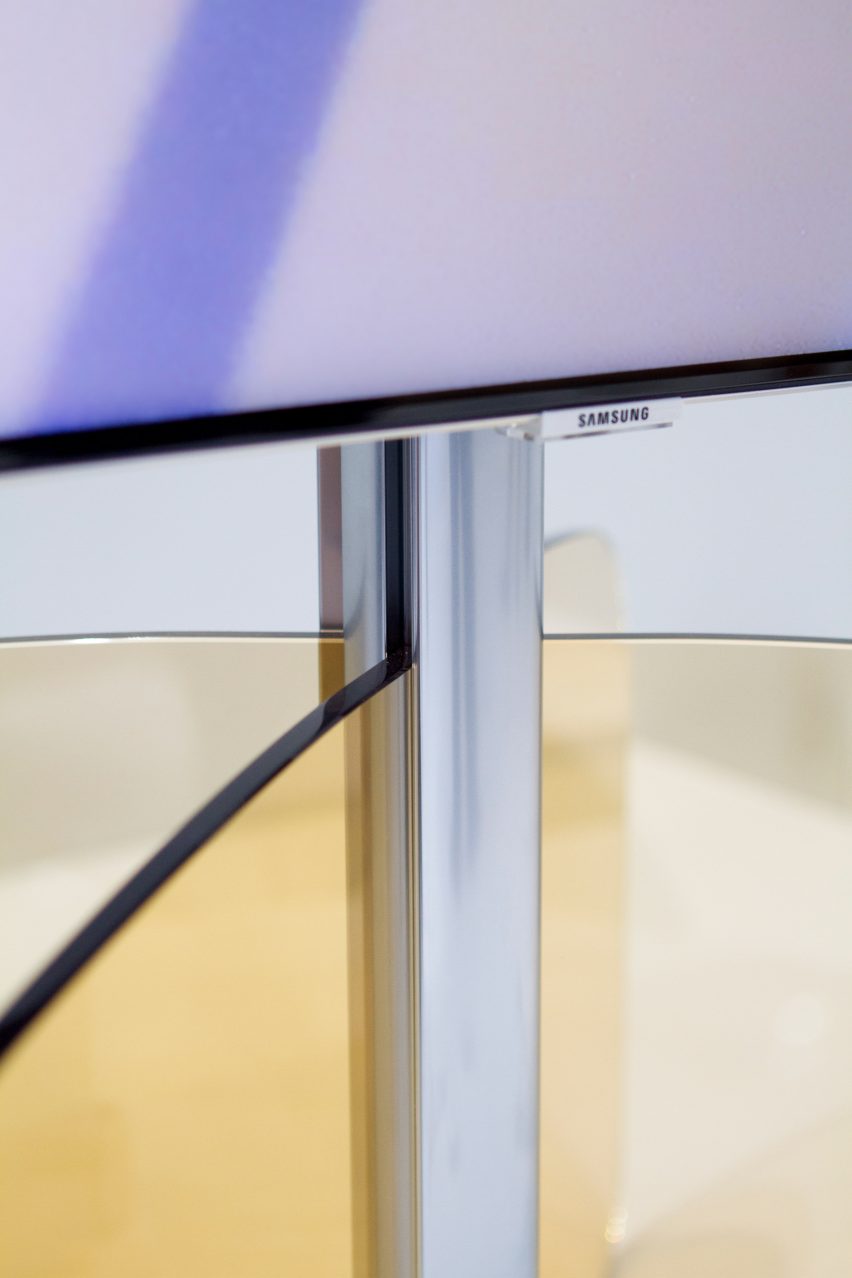
From the total prize pot of €30,000 (£27,675), the winner receives €8,000 (£7,360), while the four runners are awarded €3,000 (£2,760) and 10 other shortlisted designers each receive €1,000 (£920).
The movie was filmed by Dezeen in Berlin for Samsung. Photographs used in the story are by Sedlar & Wolff.
